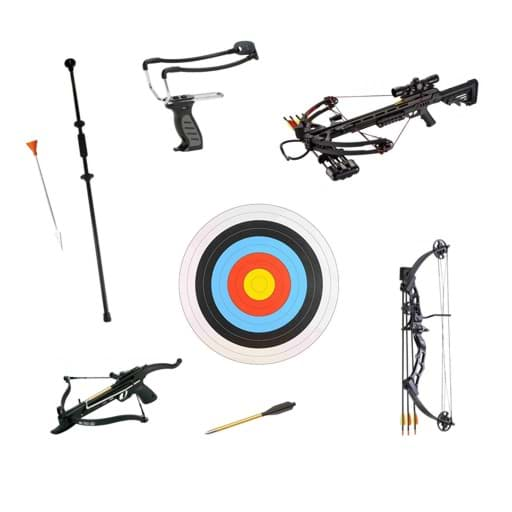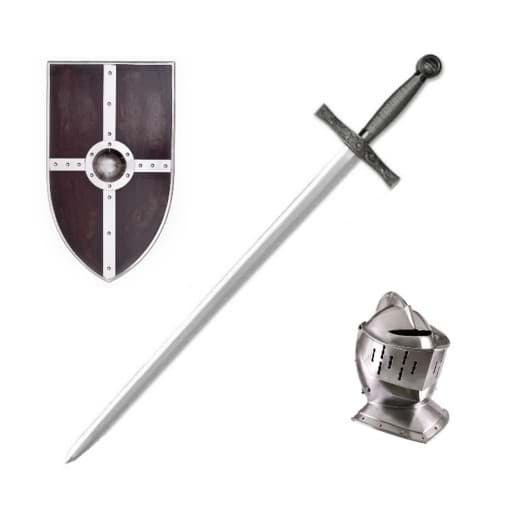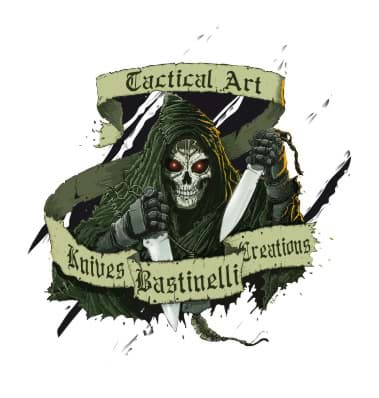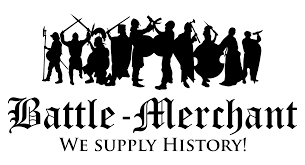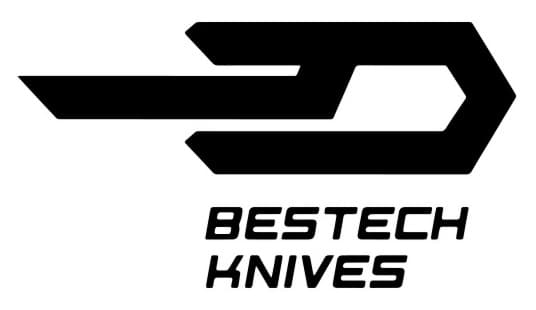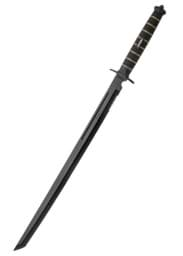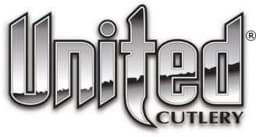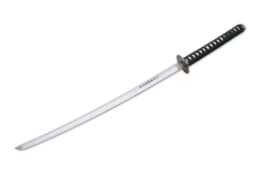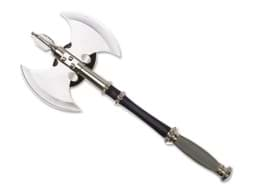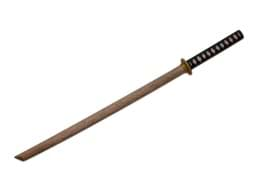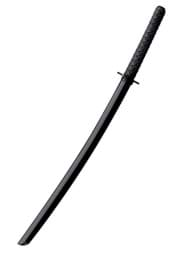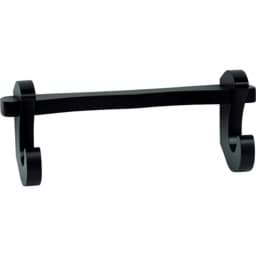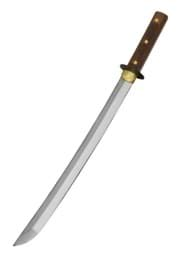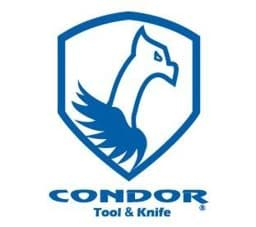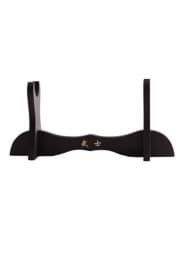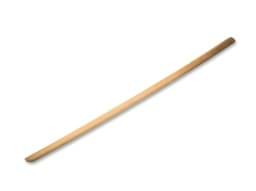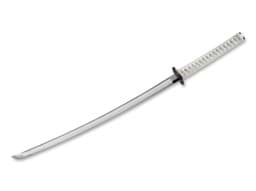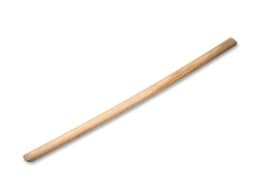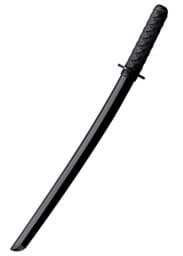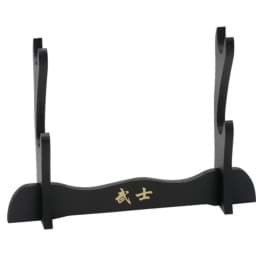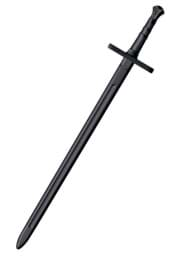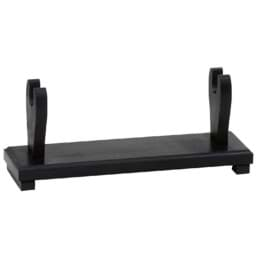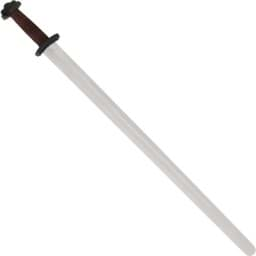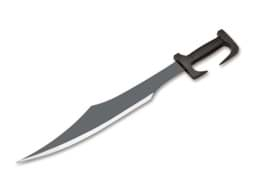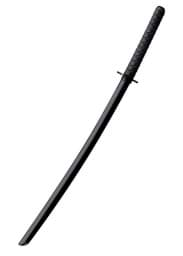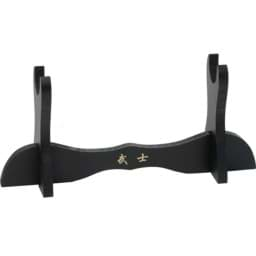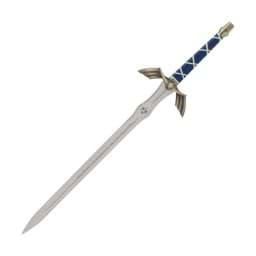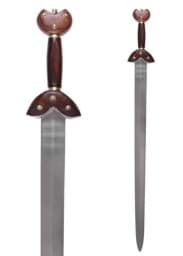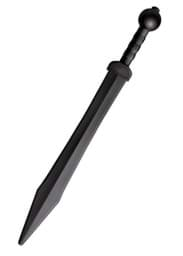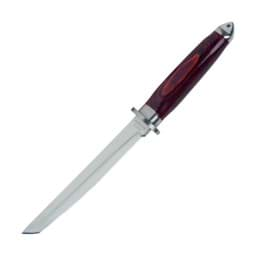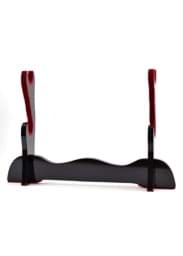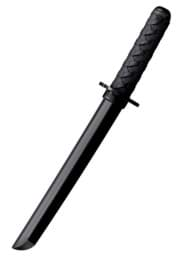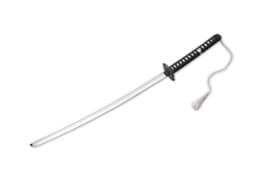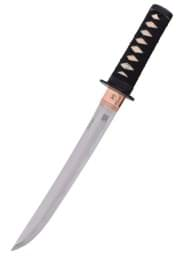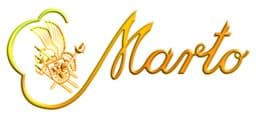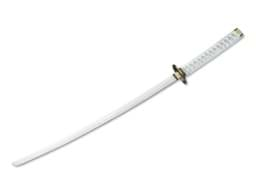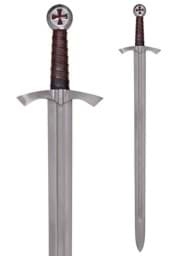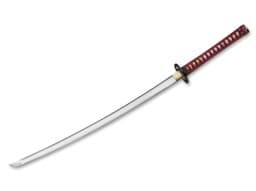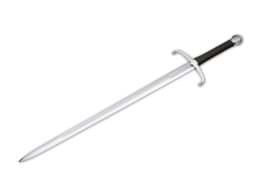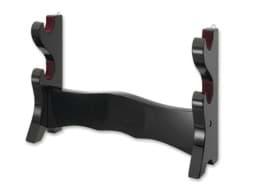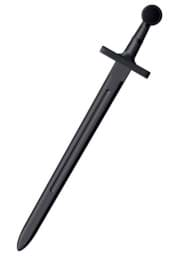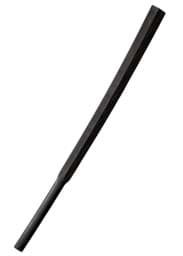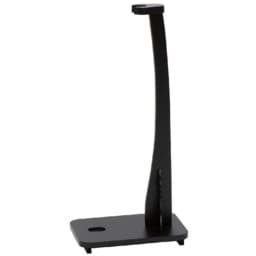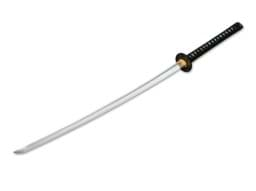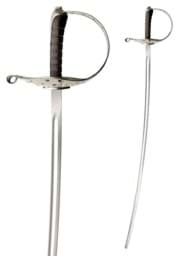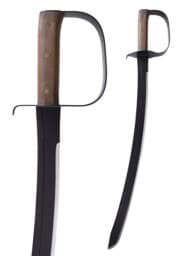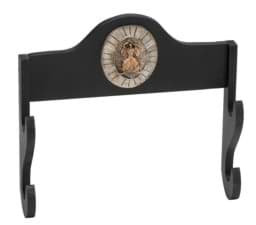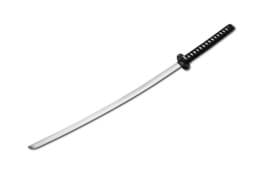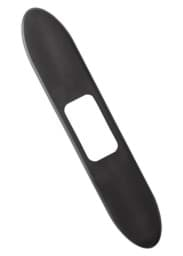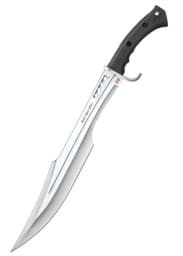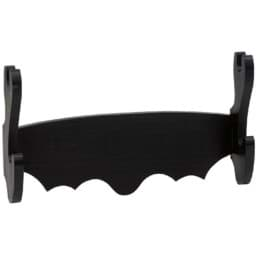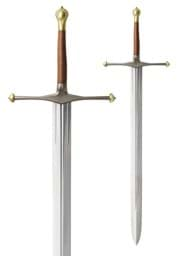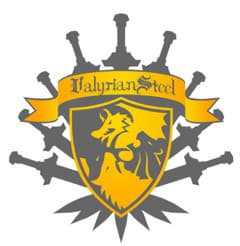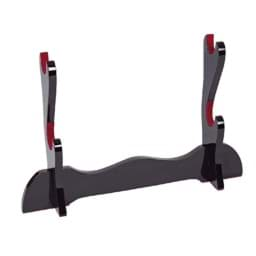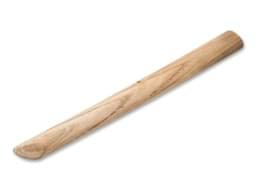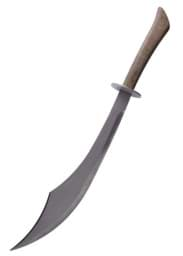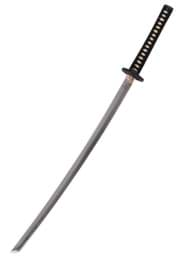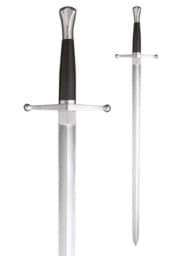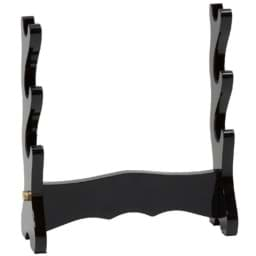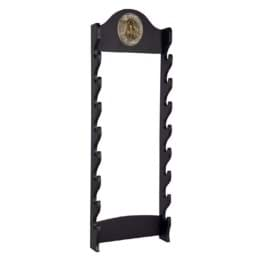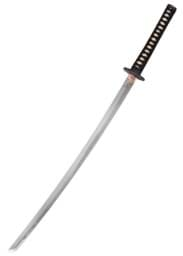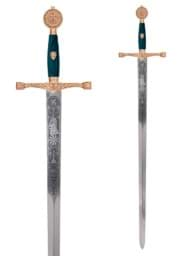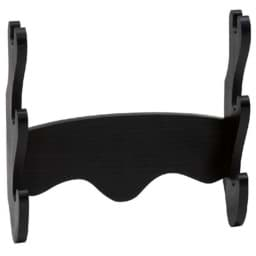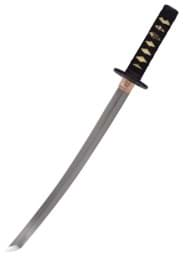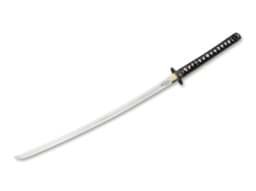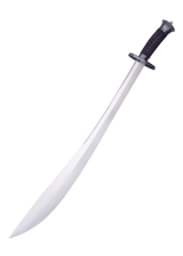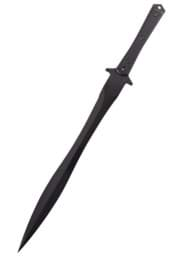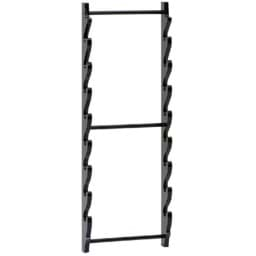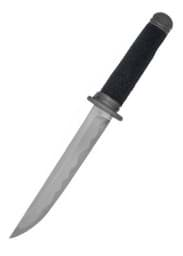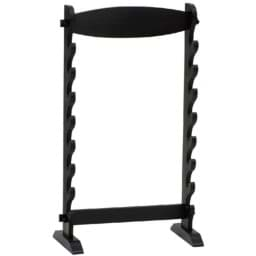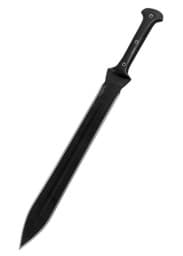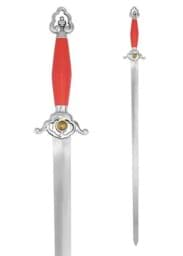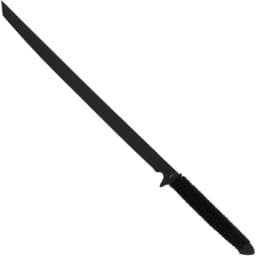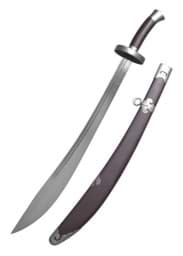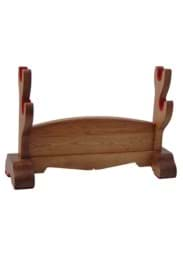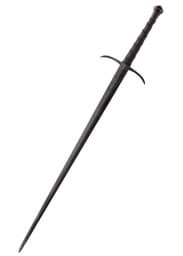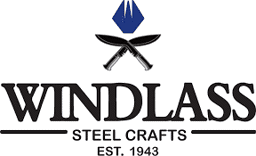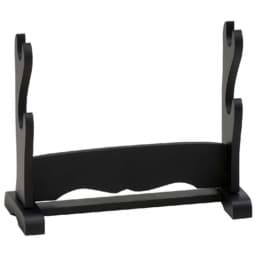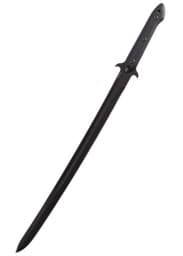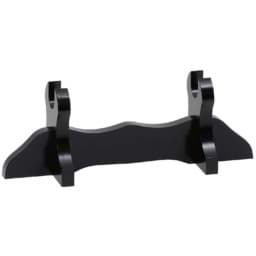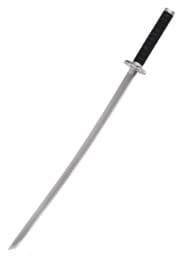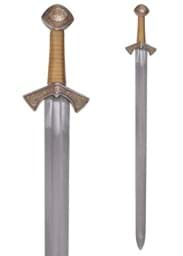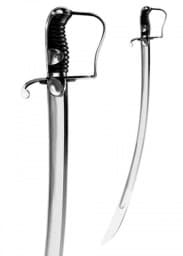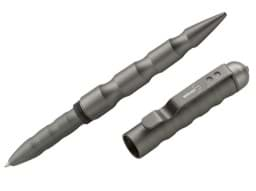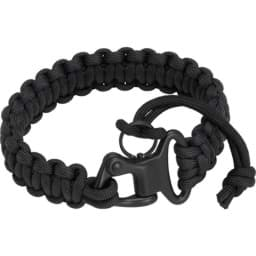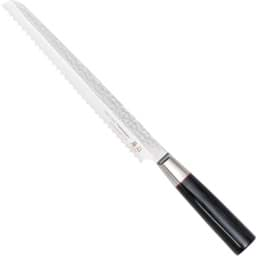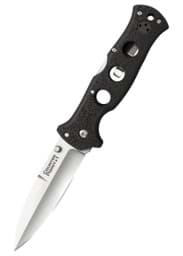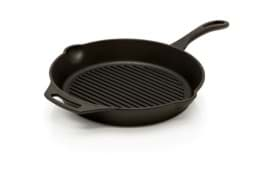Swords
1-72 of 705
United Cutlery - USMC Blackout Combat Sword
United Cutlery USMC Blackout Combat Sword ► Modern Ninja Sword ✓ Total length 71 cm ✓ 51 cm long blade ✓ stainless steel AISI-6 ✓ "buy in Switzerland!"
* Prices incl. VAT, plus shipping
Böker Magnum - Black Samurai
Böker Magnum Black Samurai ► Decorative Katana ✓ Total length 98.0 cm ✓ 58.0 cm long blade ✓ Carbon steel ✓ Weight 775 g ✓ "buy now in Switzerland!"
* Prices incl. VAT, plus shipping
Böker Magnum - Doppelkopfaxt
Böker Magnum Double Head Axe ► Double-headed battle axe ✓ Total length 54.0 cm ✓ 17.0 cm long blade ✓ 420 Steel ✓ Silver wire handle ✓ Weight 1320 g ✓ Buy now!
* Prices incl. VAT, plus shipping
Böker Magnum - Bokken
Böker Magnum Bokken ► Total length 98.5 cm ✓ 72.5 cm long blade ✓ Robinia wood steel ✓ Handle made of robinia wood ✓ Weight 780 g ✓ Buy now!
* Prices incl. VAT, plus shipping
Cold Steel - O Bokken Training Sword with Optimized Grip
The O Bokken by Cold Steel is a Japanese-style training sword with an optimized handle and a 80 cm long blade made of polypropylene
* Prices incl. VAT, plus shipping
Haller - Wall Mount for a Samurai Sword
Haller wall mount for a samurai sword ► Sword Stands ✓ Wood, stained ✓ "buy now in Switzerland!"
* Prices incl. VAT, plus shipping
Condor Tool & Knife - Condor Wakizashi
Wakizashi with 43 cm long blade made of 1075 carbon steel, handle made of textured walnut wood, and scabbard made of walnut wood with paracord wrapping
* Prices incl. VAT, plus shipping
Battle Merchant - Japanese Table Stand for a Samurai Sword
Sword stand for a single samurai sword. The Japanese table stand for a samurai sword from Battle Merchant
* Prices incl. VAT, plus shipping
Böker Magnum - Bokken White Oak Katana
Böker Magnum Bokken White Oak Katana ► Training sword ✓ Total length 103.0 cm ✓ 78.0 cm long blade ✓ made of white oak ✓ Weight 519 g ✓
* Prices incl. VAT, plus shipping
Böker Magnum - White Samurai
Böker Magnum White Samurai ► Decorative Katana ✓ Total length 103.0 cm ✓ 71.0 cm long blade ✓ 1045 Steel ✓ Weight 1350 g ✓ "buy now in Switzerland!"
* Prices incl. VAT, plus shipping
Böker Magnum - Bokken White Oak Wakizashi
Böker Magnum Bokken White Oak Wakizashi ► Training sword ✓ Total length 77.0 cm ✓ 54.5 cm long blade ✓ made of white oak ✓ Buy now!
* Prices incl. VAT, plus shipping
Cold Steel - Wakizashi Bokken Training Sword with Optimized Grip
The Wakizashi Bokken by Cold Steel is a training sword made of polypropylene with an optimized handle and a 53.3 cm long blade
* Prices incl. VAT, plus shipping
Haller - Table Stand for Two Samurai Swords
Haller table stand for two samurai swords ► Sword stand for two samurai swords ✓ "buy now in Switzerland!"
* Prices incl. VAT, plus shipping
Cold Steel - Hand-and-a-Half Training Sword
Sturdy one-and-a-half-handed training sword made of polypropylene with a 86.4 cm long blade. The one-and-a-half-handed training sword by Cold Steel
* Prices incl. VAT, plus shipping
Haller - Simple Table Stand for a Samurai Sword Black
Haller simple table stand for a samurai sword black► Sword stand for a samurai sword ✓ "buy now in Switzerland!"
* Prices incl. VAT, plus shipping
Haller - Battle Ready Viking Sword
Haller Show Fight Viking Sword ► Battle-ready sword ✓ Total length 92 cm ✓ 76 cm long blade ✓ Carbon steel ✓ Suede handle ✓ Buy now!
* Prices incl. VAT, plus shipping
Böker Magnum - Leonidas
Böker Magnum Leonidas ► Fantasy Swords ✓ Total length 70.2 cm ✓ 53.5 cm long blade ✓ Carbon steel ✓ Weight 2 kg ✓ "buy in Switzerland!"
* Prices incl. VAT, plus shipping
Cold Steel - Bokken Training Sword with Optimized Grip
Cold Steel's Bokken with optimized grip is a polypropylene training sword with a 76.2 cm long blade
* Prices incl. VAT, plus shipping
Haller - Table Stand for a Samurai Sword 80979
Haller table stand for a samurai sword II ► Sword Stands ✓ Wood, stained ✓ "buy now in Switzerland!"
* Prices incl. VAT, plus shipping
Haller - Zelda Master Sword
The Zelda Mastersword by Haller with a 78 cm long blade made of rust-free 420er steel is modeled after the original from "The Legend of Zelda"
* Prices incl. VAT, plus shipping
Battle Merchant - Celtic Sword of the La Tène Period
Battle Merchant Celtic Sword of the La Tène Period with Scabbard ► Total length 85 cm ✓ 67 cm long blade made of spring steel EN45 ✓ Weight 900 g ✓ Buy now!
* Prices incl. VAT, plus shipping
Cold Steel - Gladius Training Sword
The Gladius by Cold Steel is a durable training sword with a 55.9 cm long blade, inspired by Roman models
* Prices incl. VAT, plus shipping
Haller - Tanto Knife
Exquisite Tanto knife with a 4208 cm long American Tanto blade made of 420 steel, handle with Pakkawood scales, delivered in a matching leather sheath
* Prices incl. VAT, plus shipping
John Lee - Table Stand for Two Samurai Swords
Elegant sword stand with padded holding rails for two samurai swords. The table stand for two Samurai swords by John Lee
* Prices incl. VAT, plus shipping
Cold Steel - O Tanto Bokken Training Sword with Optimized Grip
Cold Steel's O Tanto Bokken (2030.55 model) is a training sword with an optimized handle and a 30.5 cm long blade made of polypropylene
* Prices incl. VAT, plus shipping
Böker Magnum - Classic Samurai
Böker Magnum Classic Samurai ► Decorative Katana ✓ Total length 105.0 cm ✓ 69.0 cm long blade ✓ 440A Steel ✓ Weight 1050 g ✓ "buy now in Switzerland!"
* Prices incl. VAT, plus shipping
Marto - Tanto Knife
Marto Tanto ► Decorative Tanto ✓ Total length 45 cm ✓ 27 cm long blade ✓ Weight 400 g ✓ "buy now in Switzerland!"
* Prices incl. VAT, plus shipping
Böker Magnum - Manga Sword
Böker Magnum Manga Sword ► Decorative Katana ✓ Total length 109.0 cm ✓ 68.5 cm long blade ✓ Carbon steel ✓ Weight 1200 g ✓ "buy now in Switzerland!"
* Prices incl. VAT, plus shipping
Battle Merchant - Scottish Templar Sword
Battle Merchant Scottish Templar Sword ► Total length 96 cm ✓ 78 cm long blade ✓ Leather sheath ✓ Weight 1.5 kg ✓ "buy in Switzerland!"
* Prices incl. VAT, plus shipping
Böker Magnum - Red Samurai
Böker Magnum Red Samurai ► Decorative Katana ✓ Total length 103.0 cm ✓ 71.0 cm long blade ✓ 1045 Steel ✓ Weight 1350 g ✓ "buy now in Switzerland!"
* Prices incl. VAT, plus shipping
Böker Magnum - Knight's Sword
Böker Magnum Knight's Sword ► Decorative sword ✓ Total length 105.0 cm ✓ 80.0 cm long blade ✓ Carbon steel ✓ Leather sheath ✓ Weight 1000 g ✓
* Prices incl. VAT, plus shipping
Böker Magnum - Sword Stand Double
Böker Magnum Sword Stand Double ► Sword stand for two samurai swords ✓ made of wood ✓ "buy now in Switzerland!"
* Prices incl. VAT, plus shipping
Cold Steel - Medieval Training Sword
Medieval training sword made of polypropylene, for realistic sword fighting. The Medieval Training Sword by Cold Steel
* Prices incl. VAT, plus shipping
Cold Steel - Suburito Training Weapon
The Suburito by Cold Steel is a training weapon with a total length of 114.3 cm that simulates the weight of a traditional Japanese sword
* Prices incl. VAT, plus shipping
Haller - Vertical Stand for a Samurai Sword
Haller Upright Stand for a Samurai Sword ► Sword stand for vertical storage of a samurai sword ✓ "buy now in Switzerland!"
* Prices incl. VAT, plus shipping
Böker Magnum - Akito
Böker Magnum Akito ► Sharp functional katana ✓ Total length 102.0 cm ✓ 72.5 cm long blade ✓ Carbon steel ✓ Weight 1120 g ✓ "buy now in Switzerland!"
* Prices incl. VAT, plus shipping
Cold Steel - Training Saber Made of Steel, 2018 Model, Without Scabbard
Cold Steel's training saber made of steel (1065081.38 model without scabbard) has a 81.3 cm long blade made of 1065 carbon steel and a leather handle
* Prices incl. VAT, plus shipping
Condor Tool & Knife - Marine-Entermesser
Condor Tool & Knife Naval Cutlass ► High-quality saber ✓ Total length 74.3 cm ✓ 61.0 cm long blade ✓ 1075 carbon steel ✓ Hardwood handle ✓ Buy now!
* Prices incl. VAT, plus shipping
Haller - Wall Mount with Samurai Emblem for Two Samurai Swords
Haller wall mount with samurai emblem for two samurai swords ► Sword holder with emblem made of stained wood ✓ for two samurai swords ✓ "buy in Switzerland!"
* Prices incl. VAT, plus shipping
Böker Magnum - Amber Dragon
Böker Magnum Amber Dragon ► Decorative Katana ✓ Total length 95.5 cm ✓ 67.5 cm long blade ✓ Carbon steel ✓ Weight 648 g ✓ "buy now in Switzerland!"
* Prices incl. VAT, plus shipping
Cold Steel - Replacement Guard for Training Sword 92BKHNH
This replacement crossguard is made of polypropylene and is suitable for the training sword 92BKHNH from Cold Steel
* Prices incl. VAT, plus shipping
United Cutlery - Honshu Spartan D2
United Cutlery Honshu Spartan D2 ► Total length 58.2 cm ✓ 42 cm long blade ✓ Stainless steel D2 ✓ Handle made of TPR ✓ "buy now in Switzerland!"
* Prices incl. VAT, plus shipping
Haller - Wall Mount for Two Samurai Swords
Haller wall mount for two samurai swords ► Sword holder for wall mounting ✓ for two samurai swords ✓ "buy now in Switzerland!"
* Prices incl. VAT, plus shipping
Game of Thrones - Ice, Sword of Eddard Stark
Elaborately crafted, officially licensed, and limited to 2500 pieces reproduction of Eddard Stark's sword "Ice" from Game of Thrones with certificate of auth...
* Prices incl. VAT, plus shipping
Haller - Table Stand with Velvet Inlay for Two Samurai Swords
Haller table stand with velvet inlay for two samurai swords ► Sword stand for two samurai swords ✓ with velvet insert ✓ "buy now in Switzerland!"
* Prices incl. VAT, plus shipping
Böker Magnum - White Oak Tanto
Böker Magnum White Oak Tanto ► Training sword ✓ Total length 29.7 cm ✓ 19.5 cm long blade ✓ made of white oak ✓ Weight 105 g ✓
* Prices incl. VAT, plus shipping
Condor Tool & Knife - Sinbad Scimitar
Solid scimitar sword with a 56 cm long convex ground blade made of 1075 carbon steel, walnut wood handle, and sturdy leather sheath
* Prices incl. VAT, plus shipping
Marto - Crane Katana
Marto Crane Katana ► Elegant decorative katana ✓ Total length 100 cm ✓ Weight 1.4 kg ✓ made in Spain ✓ "buy now in Switzerland!"
* Prices incl. VAT, plus shipping
Hanwei - War Sword Bastard Sword 14th Century
Hanwei War Sword Two-Handed Sword 14. century ► Total length 102.9 cm ✓ 82.6 cm long blade ✓ Carbon steel 1566" ✓ Hardwood handle ✓ Buy now!
* Prices incl. VAT, plus shipping
Haller - Elegant Table Stand for Three Samurai Swords
Haller Noble Table Stand for Three Samurai Swords ► Sword stand for three samurai swords ✓ "buy now in Switzerland!"
* Prices incl. VAT, plus shipping
Haller - Wall Mount with Samurai Emblem for 8 Samurai Swords
Haller wall mount with samurai emblem for 8 samurai swords ► Wall mount with emblem made of stained wood ✓ for 8 samurai swords ✓ "buy now in Switzerland!"
* Prices incl. VAT, plus shipping
Marto - Black Katana
Marto Black Katana ► Elegant decorative katana ✓ Total length 100 cm ✓ 69.5 cm long blade ✓ Stainless steel 440 ✓ Weight 1.4 kg ✓ made in Spain ✓
* Prices incl. VAT, plus shipping
Marto - Excalibur Sword Gold with Decorative Etching
Marto Sword Excalibur Gold with Decorative Etching ► Total length 120 cm ✓ Stainless steel ✓ Weight 2100 g ✓ "buy now in Switzerland!"
* Prices incl. VAT, plus shipping
Haller - Wall Mount for Three Samurai Swords
Haller wall mount for three samurai swords ► Sword holder for wall mounting ✓ for three samurai swords ✓ "buy now in Switzerland!"
* Prices incl. VAT, plus shipping
Marto - Crane Wakizashi
Marto Crane Wakizashi ► Elegant decorative Wakizashi ✓ Total length 75 cm ✓ Weight 1.2 kg ✓ made in Spain ✓ "buy now in Switzerland!"
* Prices incl. VAT, plus shipping
Böker Magnum - Bride's Sword
Böker Magnum Bride's Sword ► Decorative Katana ✓ Total length 103.0 cm ✓ 71.0 cm long blade ✓ 1045 Steel ✓ Rayskin handle ✓ Weight 1350 g ✓ Buy now!
* Prices incl. VAT, plus shipping
Hanwei - Practical Kung Fu Broadsword
Hanwei Practical Kung Fu Broadsword ► Total length 84.5 cm ✓ 71.1 cm long blade ✓ 1566 carbon steel ✓ Weight 737 g ✓ Buy now!
* Prices incl. VAT, plus shipping
APOC - Wasteland Gladius
APOC Wasteland Gladius ► Tactical European Swords ✓ Total length 83.82 cm ✓ 54.29 cm long blade ✓ 9260 spring steel ✓ Handle made of G10 ✓ Kydex sheath ✓
* Prices incl. VAT, plus shipping
Haller - Wall Mount for 8 Samurai Swords
Haller wall mount for 8 samurai swords ► Sword holder for wall mounting ✓ for 8 samurai swords ✓ "buy now in Switzerland!"
* Prices incl. VAT, plus shipping
Hanwei - Tactical Tanto with Ray Skin Handle
Hanwei Tactical Tanto with Stingray Skin Handle ► Total length 29.8 cm ✓ 17.1 cm long blade ✓ Steel sheath ✓ Weight 283 g ✓ "buy in Switzerland!"
* Prices incl. VAT, plus shipping
Haller - Stand for 8 Samurai Swords
Haller stand for 8 samurai swords ► Sword stand for 8 samurai swords ✓ "buy now in Switzerland!"
* Prices incl. VAT, plus shipping
Condor Tool & Knife - Tactical Gladius
Tactical Gladius sword with 47.6 cm long blade made of 1075 carbon steel, handle made of Micarta and Kydex sheath. The Tactical Gladius by Condor
* Prices incl. VAT, plus shipping
Hanwei - Practical Wushu Sword
Hanwei Practical Wushu Sword ► Total length 92.7 cm ✓ 76.2 cm long blade ✓ 1566 carbon steel ✓ Weight 454 g ✓ "buy now in Switzerland!"
* Prices incl. VAT, plus shipping
Haller - Commando Sword
Haller Commando Sword ► Other Asian Swords ✓ 46 cm long blade ✓ 420 Steel ✓ Nylon handle ✓ Plastic sheath ✓ Buy now!
* Prices incl. VAT, plus shipping
Hanwei - Hsu Wushu Dao Chinese Saber
Hanwei Hsu Wushu Dao Chinese Saber ► Total length 95 cm ✓ 69.5 cm long blade ✓ 65Mn carbon steel ✓ Weight 1485 g ✓ "buy now in Switzerland!"
* Prices incl. VAT, plus shipping
Hanwei - Sword Stand for 2 Samurai Swords Natural Wood
Hanwei Sword Stand for 2 Samurai Swords Natural Wood ► Padded ✓ Weight 1500 g ✓ "buy now in Switzerland!"
* Prices incl. VAT, plus shipping
Windlass Steelcraft - Battlecry Bosworth Longsword
Windlass Steelcraft Battlecry Bosworth Longsword ► Longsword ✓ Total length 120.0 cm ✓ 91.0 cm long blade ✓ Leather sheath ✓ Weight 1600 g ✓
* Prices incl. VAT, plus shipping
Haller - Table Stand for Two Samurai Swords 30800
Haller table stand for two samurai swords II ► Sword Stands ✓ Wood, stained ✓ "buy now in Switzerland!"
* Prices incl. VAT, plus shipping
APOC - Survival Cutlass
APOC Survival Cutlass ► Tactical Saber ✓ Total length 75.56 cm ✓ 54.61 cm long blade ✓ 9260 spring steel ✓ Handle made of G10 ✓ MOLLE Kydex Sheath ✓ Buy now!
* Prices incl. VAT, plus shipping
Haller - Table Stand for a Tanto
Haller table stand for a tanto ► Sword Stands ✓ Wood, high gloss lacquered ✓ "buy now in Switzerland!"
* Prices incl. VAT, plus shipping
Battle Merchant - Silver Dragon Katana
Battle Merchant Silver Dragon Katana ► Decorative Katana ✓ Total length 93 cm ✓ 68 cm long blade ✓ 420 steel ✓ "buy now in Switzerland!"
* Prices incl. VAT, plus shipping
Battle Merchant - Langeid Viking Sword
Battle Merchant Viking Sword from Langeid ► Decorative Viking Sword ✓ Total length 96 cm ✓ 78 cm long blade ✓ Wooden scabbard ✓ Weight 1300 g ✓
* Prices incl. VAT, plus shipping
Recently viewed products
Cold Steel - Light Cavalry Saber of 1796 with Steel Scabbard
CHF 469.00 *
Böker Plus - MPP Grey
CHF 39.00 *
Black Field - Black Bracelet
CHF 20.00 *
Suncraft - Senzo Bread Knife
CHF 185.00 *
Cold Steel - Counter Point 1 AUS-10A
CHF 156.00 *
Petromax - Grill Fire Pan GP30 with Handle
CHF 44.20 *
Niedrigster:
CHF 52.00 *

